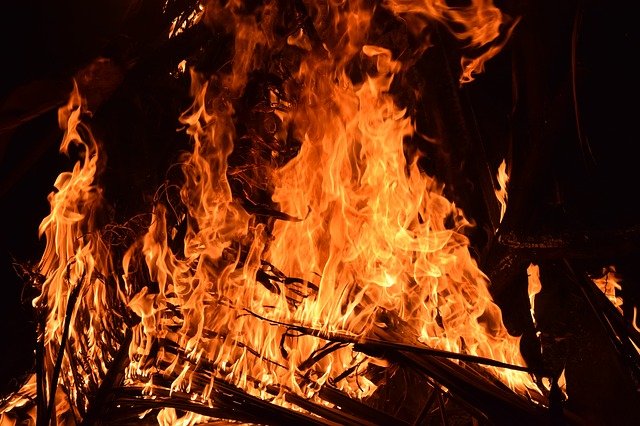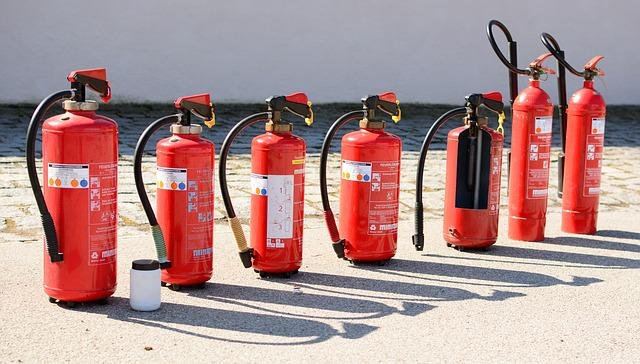FIRE CONTROL: TYPES OF FIRE AND HOW TO QUENCH THEM.

In this article, I will be explaining the different types of fires we have and how to extinguish them.


Fire is classified into 5 groups. They are:
CLASS-A
CLASS-B
CLASS-C
CLASS-D and
CLASS-K fires.


1. CLASS-A FIRES:
Class A fires are those fire that consist of fuel materials such as paper, wood, and plastics. This class of fire is the most common and it's very easy to put out with a fire extinguisher.
Class-A fire can be easily quenched by removing the heat by spraying the burning solid fuels with water. Another way of controling class A fire is to reduce the oxygen content in the immediate vicinity of the fire. This can be achieved by the introduction of an inert gas such as carbon dioxide.
2. CLASS-B FIRES:
Class B fires are those fire that consist of fuel materials such as hydrocarbons, petroleum, and similar fuels. This class of fire is the not so common and it's not so easy to put out.
Class-B fire can be easily quenched using foam, powder, or carbon dioxide extinguishers. Some on the other hand may require the application of chemical fire suppressants. A more effective method is to combine fire suppressant foam with water. This mixture forms a blanket on top of the liquid fuel, which eliminates the oxygen needed for combustion.
3. CLASS-C FIRES:
Class C fires are those fire that involve electricity as a continuous power source for the ignition of the fuels that is normally associated with electrical equipment, such as plastic cable jackets. This class of fire is common among electrical appliances and it's not so easy to put out.
Class-C fire can be easily quenched by removing the oxygen with a dry powder or carbon dioxide, dry chemical ABC extinguisher. It is advisable to first remove the source of electricity before quenching class C fires.

4. CLASS-D FIRES:
Class D fires are those fire that involve combustible metals such as potassium, uranium, sodium, lithium, calcium, and plutonium. The most common metal that causes fires in Class D are magnesium and titanium.
Class-D fire can be easily quenched by the use a dry powder fire extinguisher. The aim of the powder extinguisher is to smother the fire as well as absorbing the heat produced by the and by eliminating heat and oxygen, the fire is extinguished.
5. CLASS-K FIRES:
Class K fires are those fire that involves cooking oils and grease fires, as well as fires fueled by animal and vegetable fats. An example of this type of fire is the one that happens in the kitchen while we cook.
Never use water to quench class K fire. The best way to quench class K fire is to use the Class K fire extinguisher. This kind of extinguisher is often referred to as the wet chemical fire extinguisher.


Although it's important to know the different classes of fire and how to extinguish them, we should try as much as possible to prevent fire from occuring by making sure that these three constituents of fire (Heat, fuel and oxygen) never meet.
Thank You.
Thank you for contributing to #LearnWithSteem theme (#learnwithsteem , #tutorial, and #lesson). This post has been upvoted by @tucsond using @steemcurator09 account. We encourage you to keep publishing quality and original content in the Steemit ecosystem to earn support for your content.
Regards,
Team #Sevengers
Hello @whileponderin,
Woow thank you so much for sharing this beautiful tips of how to control fire when ever we experience any fire incident. This tips will go a long way to help us and safe future homes from burning
POWER UPs| 157.839 STEEM
Never knew that fire outbreaks occur in types.
Please what is an alternative way to quench type B, C, D and K outbreaks? What can people do if the above-listed options for these types are not available, especially in the absence of dry powder and wet chemical extinguishers as in the case of types D and K?